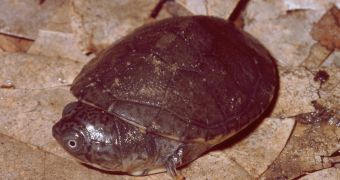The claim that one species of allegedly “extinct” turtles never existed in the first place is now making headlines, probably because this particular piece of news is nothing if not intriguing.
The discovery that a turtle species known to the scientific community as Pelusios seychellensis and believed to be extinct was never really part and parcel of our planet's biodiversity was made by a team of researchers working with the Senckenberg Research Institute in Dresden.
Said turtle species was first documented towards the beginning of the 19th century, when three specimens were allegedly found to inhabit one of the islands of the Republic of Seychelles.
At that time, the turtles were collected and, after wildlife researchers had the chance to study them, it was concluded that a new species had been found: the Pelusios seychellensis.
Despite efforts to find more such freshwater turtles, no other representatives of this species were ever located. Researchers therefore agreed that the species had to be declared extinct.
However, recent genetic evidence proves that, rather than being a self-standing species, the three turtles that started all this conundrum belonged in fact to another species, i.e. Pelusios castaneus, which happens to be rather widespread in West Africa.
“We have examined the DNA of the original specimen from the museum in Vienna and discovered that these turtles are not a separate species. The species Pelusios seychellensis has therefore never existed,” Professor Uwe Fritz explained.
“In fact, for a long time researchers were amazed that the supposed Seychelles turtles looked so deceptively similar to the West African turtles. But due to the great geographic distance, it was thought this had to be a different species, which is why the assumed Seychelles turtles were also described as a new species in 1906,” the professor went on to argue.
It is believed that the three turtles mistakenly labeled as a new and distinct species had in fact been brought to the Republic of Seychelles by humans.

 14 DAY TRIAL //
14 DAY TRIAL //